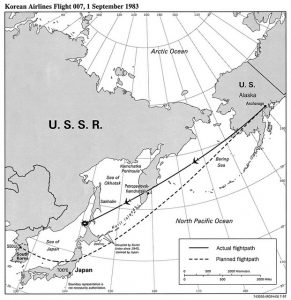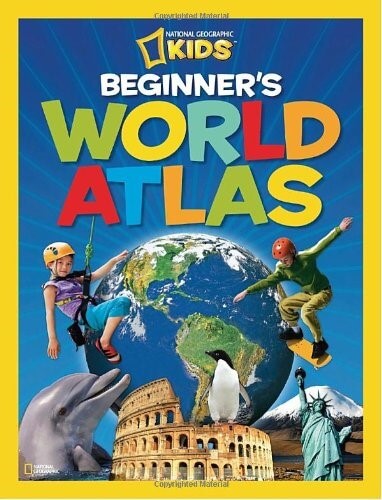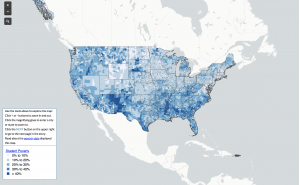
“An act of barbarism, born of a society which wantonly disregards individual rights and the value of human life and seeks constantly to expand and dominate other nations, ” President Reagan called it. This shootdown of Flight 007, a Korean Airlines Boeing 747 ariliner in 1983, resulted in the human losses of 269 from over sixteen countries, including a Representative from George in the United States House of Representatives.
The year 1983 is the turning point of the USSR’s breakdown. After this, the public sided with the US and against the USSR. It is essential for us to know why this shootdown is so important at that time. By discussing the previous history, the aftermath, the map itself, and the timing of the map’s release, we will look deeper into the Cold War chronologically.
Prior to this incident, there were already trends estimating that USSR was losing the Cold War. Only several months later, President Reagan announced a missile system plan to protect US land-based missiles. This caused a panic among USSR leaders, so to counter the fear, SSIR set up a new intelligence effort called RYAN to gather information about US. This time was highly sensitive for SSIR in both international relationships and military preparations. In the perspective of the Soviet Union, the intrusive airliner is the target to be rightly destroyed when it was questioned as an airplane to perform intelligence mission.
After the shootdown, instead of presenting the objective fact to the public, like how did an experienced Korean pilot deviate from the route and run into the prohibited airspace without warning, the United States seized the opportunity to condemn and isolate USSR by emphasizing the human losses. First, the U.S. released a substantial amount of highly classified intelligence information for a propaganda advantage. Then, the U.S. had one press conference to deliver the details of the shootdown, some of which were challenged by the Soviet Union. On September 6, 1983, the U.S. ambassador to the UN Jeane Kirkpatrick presented the event using the map and audio tapes of the Soviet Union’s pilots. That was when the people confirmed the shootdown of Korean airplane 007 for the first time.
We can look at the map to understand the process of this shootdown. However, what we see here is distorted. The most prominent distortion is the magnification of the territory of the USSR, which is five times the landmass of the US while all the irrelevant nations are ignored. In this sense, the map is trying to amplify the threat posed by the USSR to the peace of the whole world, while the US is just the victim and witness in this event, just like the other countries. Besides that, because the relative landmass of the US and USSR is changed disproportionally to fit in a single paper, we cannot tell for sure that the angle between the planned flightpath and actual flightpath is precise. A great chance is that the creator made those two routes much closer than they were so that people looking at this map would say that the Soviet Union overreacted to the simple mistake of a pilot. Also, to show that the pilot barely trespassed the territory, the actual route indicated by the black solid lines is drew to touch only a small portion of the islands (Sakhalin and Petropavlovsk Kamchatskiy) that belonged to the Soviet Union. Likewise, the symbol of the shootdown is also a clever choice. Rather than just a dot, the creator chose a sign of explosion to emphasize the destruction of the airplane, which signaled a warning for the possible war. Through all those little “tricks”, the USSR was portrayed as a merciless devil slaughtering anybody that might offend itself.
Not until 1997 did the United Nations released the map of this accident to the public. The release of the map after several years from 1983 also proves that the maps serve certain interests of United States Government. As the map shows, it is a simplified CIA map produced by a CIA employee and funded by United States Government. By postponing the release, the US might be able to direct the public opinion as it wanted since there was no evidence to prove against. After all, if the map came out right after the accident, the public would probably understand this is not a premeditated slaughter but an accident out of negligence, interfering with the objectives of the US to stir up an anti-Soviet drama.
Talking through the history and the presentation of this map, we can say that the maps are always biased to certain extent. They manipulate the thinking of the audience to serve the interests of the map creators, just like what you can see in this accident, the U.S. has used the map along with other strategies like propaganda to turn the world against the Soviet Union.
Reference:
[1]Fischer, B. (2007, March 19). A cold War Conundrum. https://www.cia.gov/library/center-for-the-study-of-intelligence/csi-publications/books-and-monographs/a-cold-war-conundrum/source.htm#HEADING1-12
[2]Wood, Denis, and John Fels. The Power of maps. London: Routledge, 1993.[3] Craig A. Morgan, e Downing of Korean Air Lines Flight 007, 11 Yale J. Int’l L. (1985). Available at: http://digitalcommons.law.yale.edu/yjil/vol11/iss1/12
[3] Wikipedia contributors. (2018, March 24). Korean Air Lines Flight 007. In Wikipedia, The Free Encyclopedia. Retrieved 22:30, March 25,2018, from https://en.wikipedia.org/w/index.php?title=Korean_Air_Lines_Flight_007&oldid=832184941
[4]“FS2004 – Target Is Destroyed (Korean Air Lines Flight 007).” Edited by Allec Joshua Ibay, YouTube, YouTube, 30 Sept. 2016, www.youtube.com/watch?v=DK_PS9QFPFw.
[5]CoolBen, Admin. “The Downing of KAL Flight 007.” Association for Diplomatic Studies and Training, adst.org/2014/03/the-downing-of-kal-flight-007/.
[6]Gordon, Michael R. “Ex-Soviet Pilot Still Insists KAL 007 Was Spying.” The New York Times, The New York Times, 9 Dec. 1996, www.nytimes.com/1996/12/09/world/ex-soviet-pilot-still-insists-kal-007-was-spying.html.
 The Nuclear Club is a radical map that focuses on mapping the possession of nuclear weapons in the world. It was produced in 1981 as part of the Pluto Project that started by a radical British publishing houses known as the Pluto Press, which aimed to promote radical social changes. The Nuclear Club is a radical map because while condemning the war and destructive powers, it also attacks traditional ideas of maps by abandoning all the features of conventional maps and focusing on expose cartographers’ value of the society, politics, and war to the surface.
The Nuclear Club is a radical map that focuses on mapping the possession of nuclear weapons in the world. It was produced in 1981 as part of the Pluto Project that started by a radical British publishing houses known as the Pluto Press, which aimed to promote radical social changes. The Nuclear Club is a radical map because while condemning the war and destructive powers, it also attacks traditional ideas of maps by abandoning all the features of conventional maps and focusing on expose cartographers’ value of the society, politics, and war to the surface.






